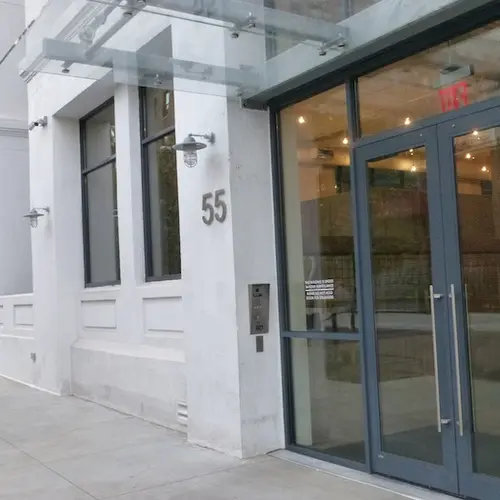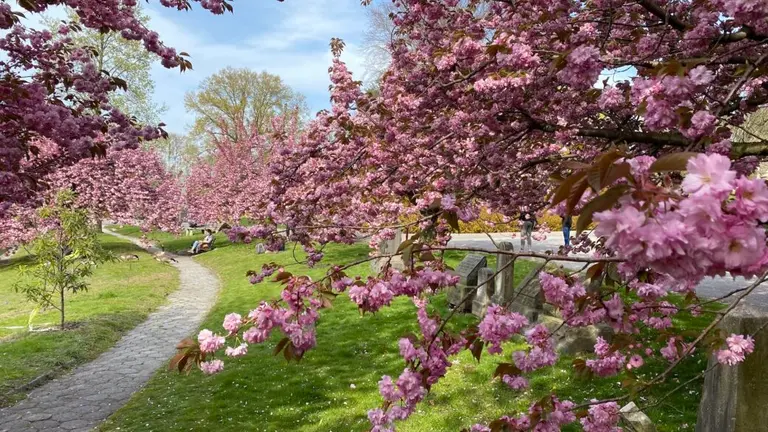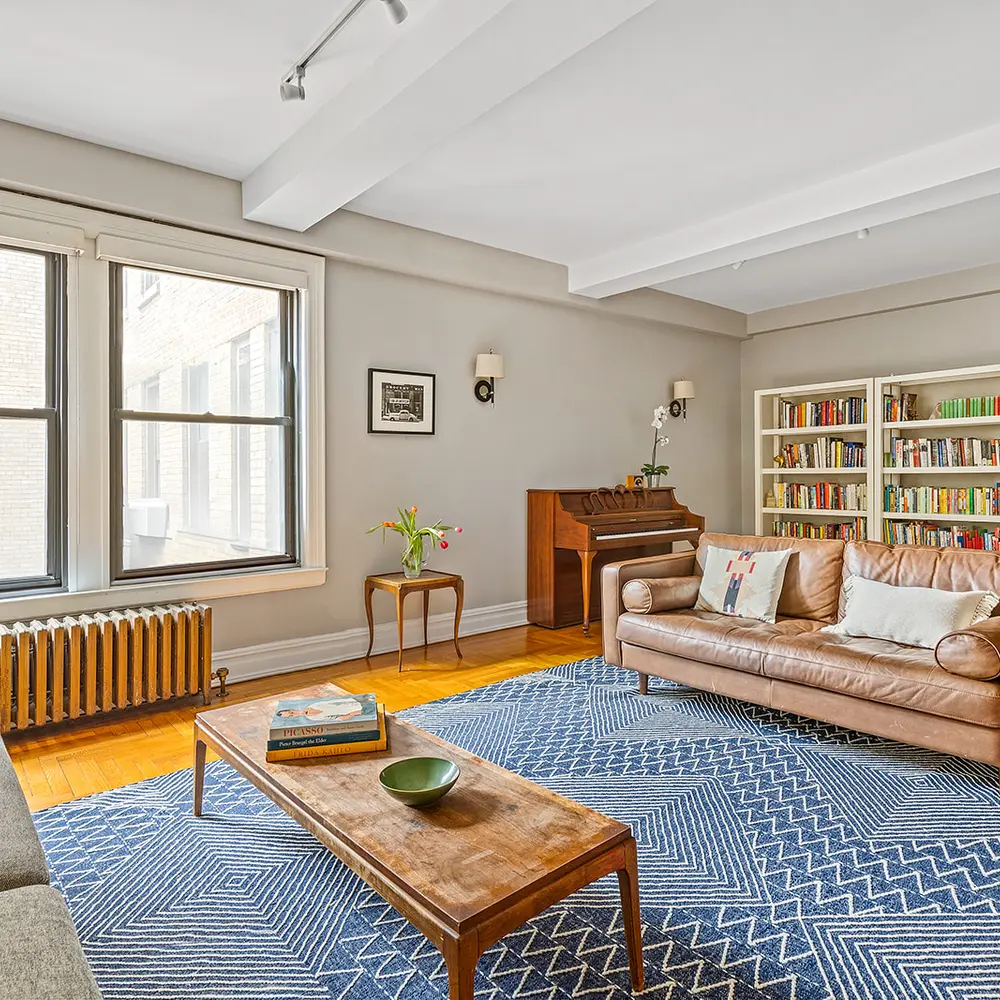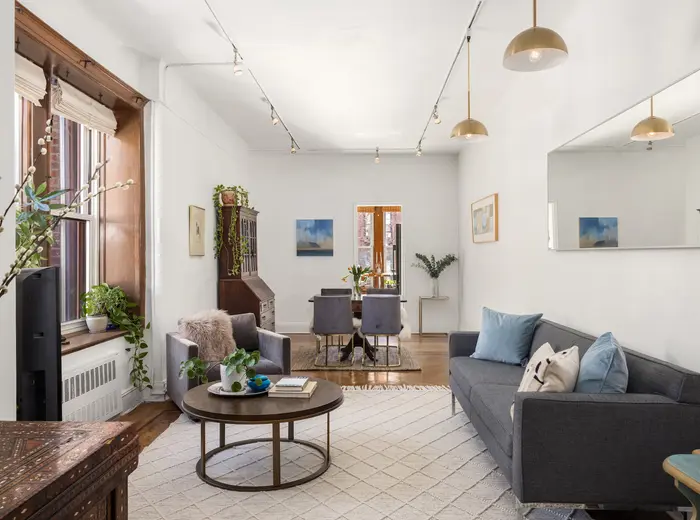Goldilocks Blocks: Hope Street in Williamsburg

Between hyper-developed hotspots, main drags in up-and-comers, and those genuinely avoidable areas, there can often be found a city’s “just-right” zones. They aren’t commonly known, but these micro-neighborhoods often hide within them real estate gems coupled with perfectly offbeat vibes. Continuing our Goldilocks Blocks series, this week we look at Hope Street in Williamsburg, Brooklyn.
It’s hard to imagine any corner of Williamsburg that doesn’t embody some form of the neighborhood’s upscale hipster paradise. With the opening of The Gorbals restaurant–to excellent reviews–atop the 6th Street Urban Outfitters on the North Side and the South Side sprouting condos and charter schools, the term “prime Williamsburg” has become meaningless. But in every district there are places that retain that charming, slightly unruly je ne sais quoi. The four blocks that comprise Hope Street fit this description.

Near the Metropolitan Avenue G and the Lorimer L, well within the bounds of prime ‘Burg proper, the brief but auspiciously-named street runs between Roebling Street and Union Avenue. The barreling Brooklyn Queens Expressway and busy Marcy Avenue give this part of Williamsburg its gritty industrial feel (without affecting property values at this stage in the neighborhood’s development). Hope Street is at the heart of what was quite recently (in the far-distant 20th century) an Italian-American enclave, now home to a fine sampling of the neighborhood’s newly-constructed residential buildings and chic destination restaurants, bars, galleries and shops.
Though blessed with its share of the ubiquitous new apartment buildings, Hope Street has a vibe that is both old-school, pre-superboom Williamsburg (think late ‘90s) and charming city village–a juxtaposition of conversation-friendly corners and plenty of seats in cafes and low-slung warehouses that hint at epic art projects within.
 Makeshift Society coworking space at the base of the 55 Hope Street apartment building.
Makeshift Society coworking space at the base of the 55 Hope Street apartment building.
Some of the area’s best street art–both commissioned and “unofficial”–can be found here. The street’s businesses are a great sampling of both the neighborhood’s creative firepower and its new family-friendly livability. A sampling: Standard Architects, a prolific architecture firm that works locally and elsewhere; Studio Luxe, a luxury interior design firm that includes an apartment at 15 CPW among its clients; Makeshift Society, a co-working space; A 5,000 square-foot music studio owned by sneaker company Converse; rustic restaurant Miller’s Tavern; Gitana Rosa art gallery. Coucou Brooklyn French language school. A YWHA community center.
Though it’s only four blocks long, Hope Street feels quite different depending on which side of the highway you’re on. The south-eastern side gently riffs on a wild-and-woolly South Side wail. Here it feels almost like a self-contained neighborhood, though it’s barely a quarter mile from the rest of the universe on the other side. The two-block street crosses Keap and dead-ends in Union Avenue, offering a nondescript jumble of auto supply shops and generic new construction apartment buildings. Yet the low-slung warehouses and colorful graffiti have a scruffy-but-clean Williamsburg 2.0 feel.
 The Converse Rubber Tracks recording studio.
The Converse Rubber Tracks recording studio.
You can hear the highway up ahead; clouds race by above. Though this is the heart of one of the city’s most coveted and expensive neighborhoods, there’s still the feeling of creative excitement, slightly shielded from the outside world by bunkeresque walls of cinderblock, creating a secret hive known (mostly) only to those who live and work within. It’s the very feeling that draws people to the world’s formerly-industrial warehouse neighborhoods.
Towards the BQE, a row of low buildings has been brilliantly transformed for the 21st century. At 130 Hope Street, eye-popping graffiti of every imaginable hue fronts a recording studio owned by street-smart sneaker company Converse. The 5,000 square-foot studio, called Rubber Tracks, offers emerging musicians of all genres an opportunity to apply for free studio time. If selected, artists record at no cost while maintaining the rights to their music. The outside artwork is by Mr. Ewokone and Shepard Fairey (works by both predated the studio’s tenancy).
When Hope Street resumes after the highway’s noisy interruption, you’ll find yourself on a gritty, forgotten-looking corner; then the colorful streetscape unfolds once again. Northwest of the BQE, the vibe is sweeter–more “gentrified” and family-friendly; it feels more connected to the bustling Bedford Avenue catwalk and the streets and avenues that radiate from it.
 Converted historic apartment building at 55 Hope Street.
Converted historic apartment building at 55 Hope Street.
Off Marcy Avenue, next to a wall whose colorful painted mural artfully contrasts with a coal-black background, city moms walk with pink-cheeked tots past the French language school within; the massive building that anchors the block–55 Hope–has been a topic of discussion since plans were revealed to turn the stunning historic white stone building into 177 rental apartments. The ground floor is home to a new coworking space, Makeshift Society–a sidewalk sandwich board invites budding entrepreneurs. The Kings Bay Y at North Williamsburg offers children’s programs.
A leafy, quiet stretch of Havemeyer Street (somehow “Hope and Havemeyer” rolls off the tongue”) crosses here. At the corner, the Hope Deli does a brisk business. Nearby on popular Roebling Street lie some of the neighborhood’s top destinations like Fette Sau BBQ and the Roebling Tea Room.
The solidly-constructed brick residence at number 14 is no standout as far as new construction, but there’s something attractive about the building’s simple modernism and the welcoming glow from its square, steel-framed modernist windows as evening falls. Apartments at this 30-unit condominium are well-appointed and fairly spacious, some with large balconies. 11 Hope is a classic big-shouldered loft building, home to the aforementioned architecture and design firms. Across the street, the aptly named Good Company, more “dive bar” than dive bar, inhabits a low yellow-brick building with old-fashioned artfully-faded painted signage. Next door, the boutique “green” condo known as SixHope offers six loft-style homes within sleek cubes of concrete, glass, wood and steel.
Where Hope meets Roebling, a classic brick warehouse with arched windows and doorways houses RePop, one of the city’s coolest vintage furniture sources; a quaintly-restored wood-frame house–it would be equally at home on a quiet New England street–is home to Miller’s Tavern, a popular brunch spot. Across the intersection, a surreal purple abstract mural somehow perfectly compliments the decorative details of another quirky historic building at 158 Roebling, currently a ping pong venue and art gallery combined. The delicate aesthetic balance of this tiny street wasn’t lost on the American denim brand Williamsburg Garment Company. Introduced in 2013, one of the company’s best selling products is a raw denim men’s jean called “Hope Street.”
Hang out on Hope:
Rubber Tracks
Good Company
Hope Garage Restaurant and Bar
Miller’s Tavern
Makeshift Society Coworking Space
Gitana Rosa Gallery
Nearby:




















































